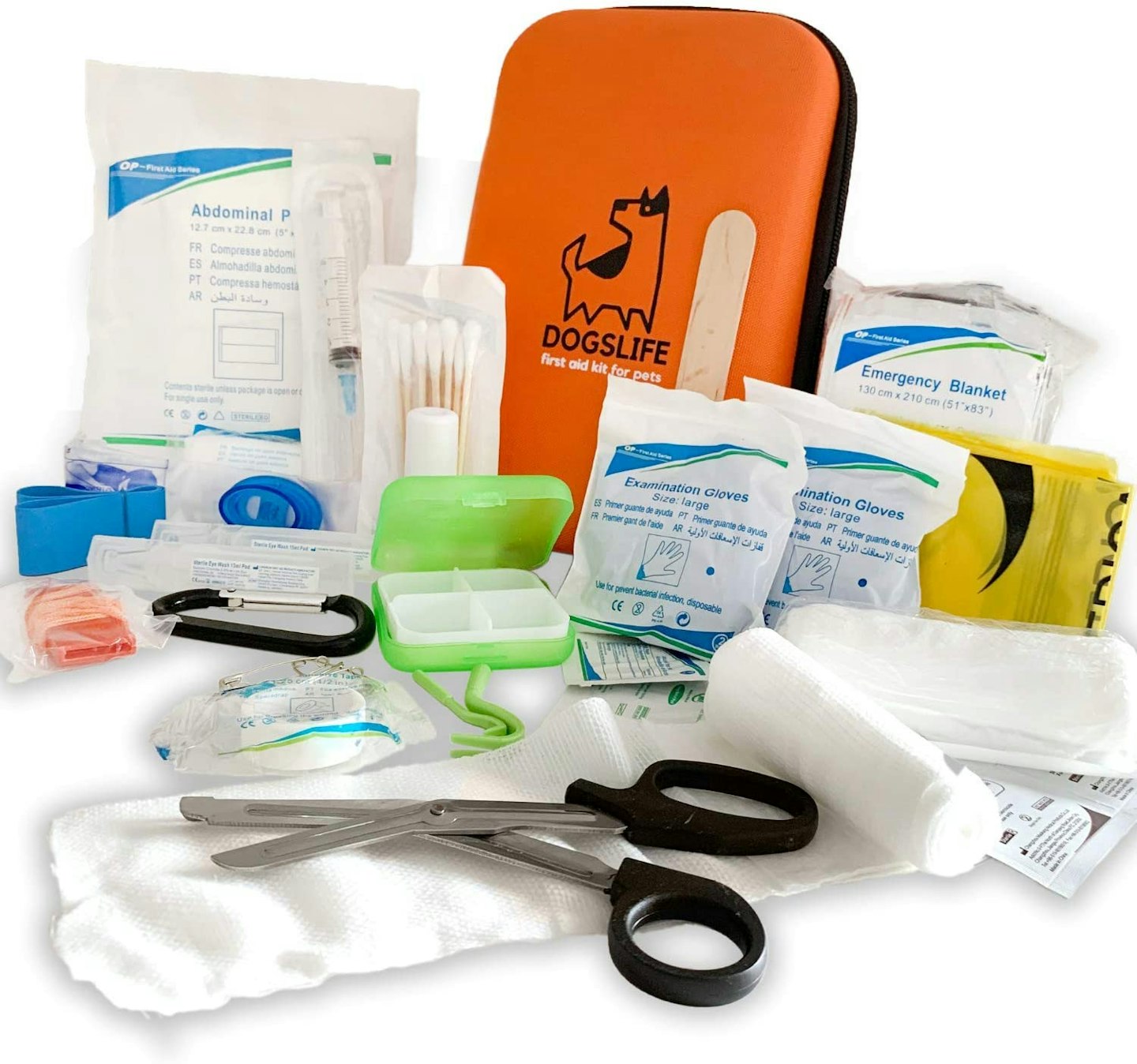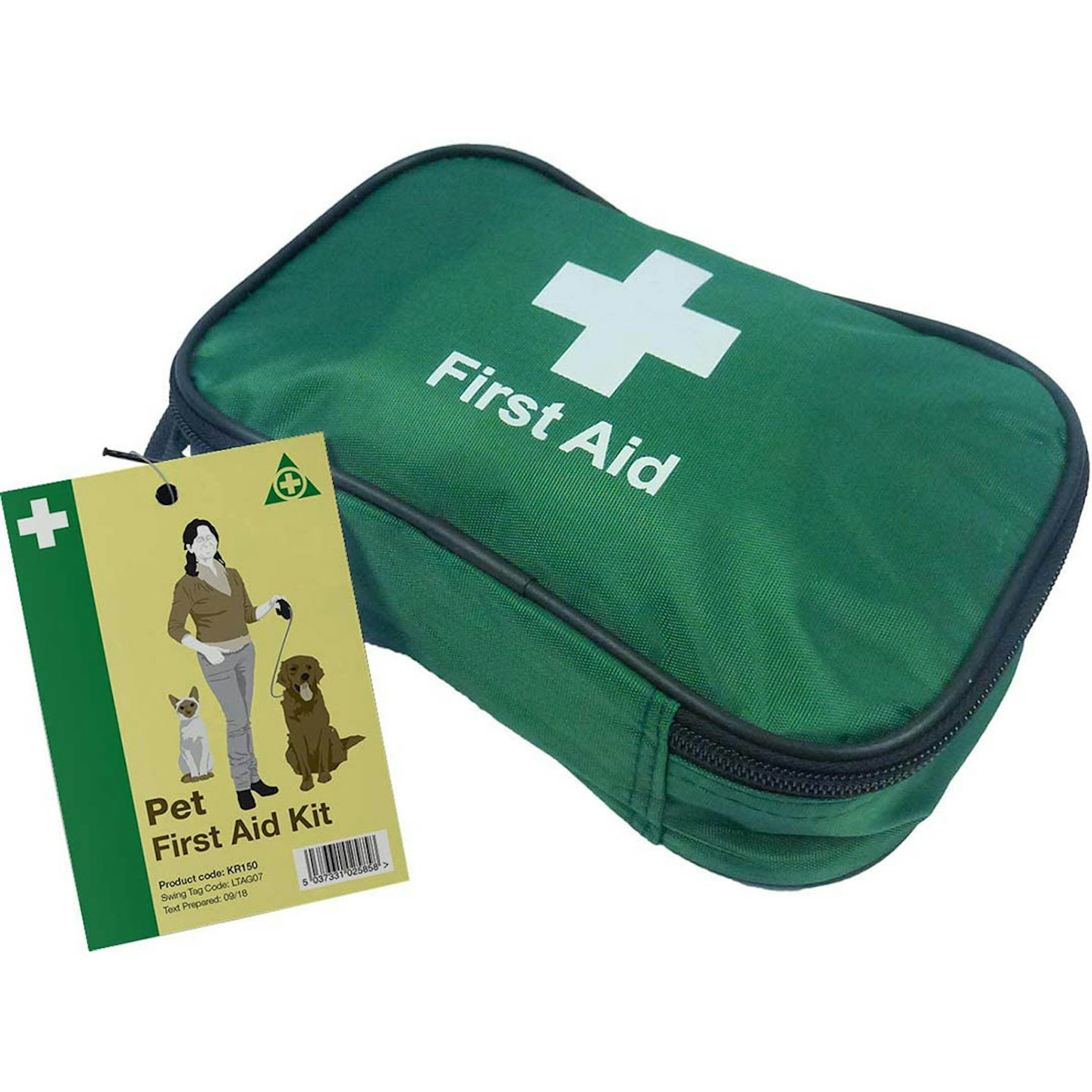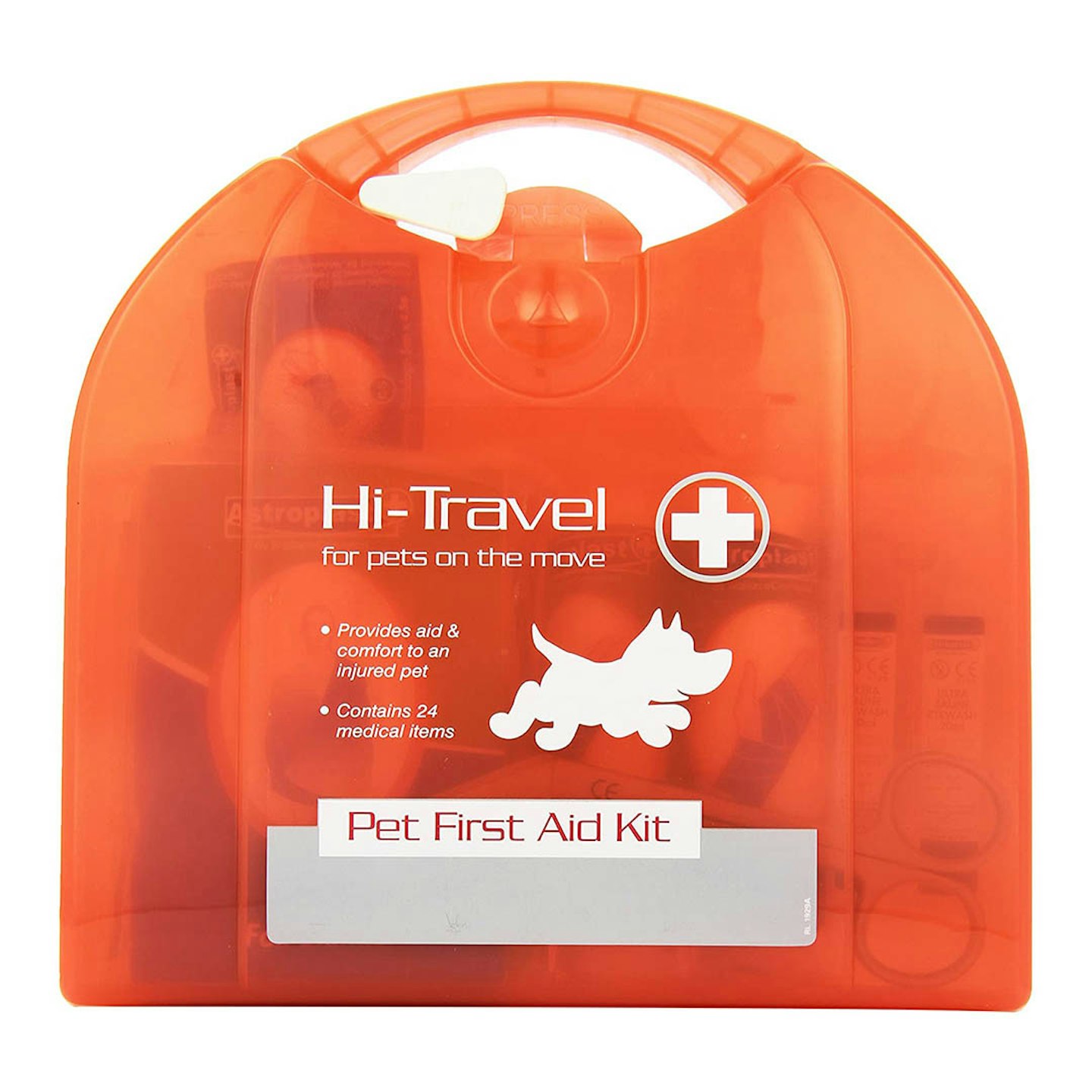The thought of your beloved four-legged friend being injured or falling ill is every pet owner's worst nightmare, so being clued-up on first aid can prove vitally important. We've spoken to the experts at PDSA - the UK's leading vet charity - to find out how to identify signs that your pet is poorly and give them the best chance of recovery in an emergency situation.
Assess the situation
“Understanding what a life-threatening situation looks like is essential,” says PDSA veterinary nurse, Nina Downing. “Our pets can react in different ways when seriously injured; some will be shocked into silence, while others will scream in pain.
“If your pet has been in an accident or becomes seriously unwell, be extremely careful when moving or handling them. They are likely to be in pain and scared, which can mean they react in unexpected ways. When taking them to the vet, do this safely and carefully to prevent further harm or injuries.”
Recognising an emergency
We’re not always there to witness the cause of these events but in these situations, time is of the essence so it’s important to act quickly. Here's what you should be looking out for:
• Not breathing or having difficulty breathing
• Unresponsive
• May have broken bones
• Having a fit/seizure
• Difficulty moving or co-ordinating movements
• May have eaten something toxic
• Have collapsed and can’t get up
• Vomiting or passing diarrhoea for more than 24 hours
Acting in an emergency
“It’s hard not to panic, but try to stay calm and think rationally,” says Nina. “Keep your vet’s contact details in your phone, as you should always call them immediately in the event of your pet becoming seriously unwell.
“Seek their advice before performing any first aid – in some cases pets can lash out when they’re in pain, which could injure you and cause more complications for them.
“For collapsed animals, performing CPR isn’t always appropriate or successful for pets and we advise owners to learn how to deliver this safely from a professional. However, if your vet is at the end of the phone, help your pet by checking for blockages in their airway and the vet can take you through CPR step by step.”
Choking
- Open their mouth and look inside, if you can’t see anything, call a vet straight away. They should be able to talk you through some first-aid options.
- Do not stick your fingers down their throat as you risk being bitten, pushing an object even further down the airway or damaging the soft tissues in the throat.
3 If a large toy is stuck in their throat, try to dislodge it by placing firm pressure with both thumbs underneath the jaw at the base of the throat and pushing forwards.
4**. If the situation escalates** and your pet collapses, take them to your nearest vet. During the journey (as long as you're not driving!), try performing the pet Heimlich manoeuvre on them:
Heimlich manoeuvre for small dogs and cats
• While you stand or kneel, hold their back against your stomach with their head up and paws down.
• Find the soft hollow under the ribs, placing your closed fist into this spot.
• Pull up and in two to three times towards your stomach in a thrusting motion.
Heimlich manoeuvre for large dogs
• Place the dog on its side and kneel behind it.
• Find the same spot and perform the same action but pulling towards their head.
Car accidents
• Wrap your pet in a blanket to keep them warm.
• Call the vet and explain in detail what has happened.
• If they are cut and bleeding, cover their wounds with a clean cloth, applying pressure to stop the bleeding.
• Don’t give them any food or drink immediately after an accident, until a vet gives you the OK to do so
Checking if your pet needs CPR
A for Airway: Gently pull the tongue forward. Check there’s nothing in the throat. If there’s something blocking the airway, remove it, taking care not to push any obstructions further down the throat.
B for Breathing: Look and listen. Are they breathing? Can you see the chest rising and falling or feel breath coming from the nostrils or mouth? If they’re not breathing, immediately check for a heartbeat.
C for Circulation: Place your hand or ear over the chest, where the elbow meets the ribcage. Can you feel/hear a heartbeat? If you are sure there is no heartbeat, start CPR.
Performing CPR
- Place your pet on their right side on a firm, flat surface. Dogs with barrel-shaped chests need to be lying on their backs and CPR compressions are done at the midpoint of the chest. For small dogs, use one hand, but for large dogs, use both hands interlocked. For cats use one hand to compress the chest from both sides while they are lying on their side.
- Perform two chest compressions per second at the widest part of the chest (Remember the song Staying Alive? Doing it to this beat is about right).
- Each compression should depress the chest by a half to two thirds. The chest should be allowed to return to the normal position after each compression.
- Keep your arms straight and if you have someone with you, swap regularly as this process is very tiring.
- After 30 compressions, extend their neck, close the mouth and blow down their nose. Give a one-second breath and one-second release.
- It is possible to create a seal with your mouth around small dog’s noses, but for larger dogs you need to close the sides of the nostrils with your hand and blow down the nostrils from the front.
- Check for a heartbeat. If your pet is still not breathing and there is no heartbeat, repeat the process – giving 30 compressions and two breaths – until veterinary help arrives or until the heartbeat and breathing return.
Broken bones
If you suspect your pet may have broken a bone, take them to a vet. Be extra cautious - you may even want to use a muzzle as your pet may bite due to pain, fear and shock.
Animal bites
If they have suffered a bite, apply pressure to stop bleeding with a clean cloth, and book a vet’s appointment immediately. They will check your pet for any serious injuries and infection. While healing takes place, ensure you regularly clean wounds using an antiseptic solution and keep a close eye on your pet in case their condition worsens.
Vomiting and diarrhoea
Just like us, our pets can often fall ill with a bout of sickness and diarrhoea and usually it’s nothing to worry about. Keep them off food for at least 12 hours and offer boiled, cooled water only. If your pet’s stomach problems are severe, or they continue to be ill after 12 hours, contact your vet.
With diarrhoea, it’s likely your dog will still have an appetite. Give them easily digestible foods, such as boiled or steamed chicken and /or white rice, low-fat cottage cheese or boiled/scrambled eggs for a day or two, until the problem resolves itself.
Mystery dog stomach bug 2022
On the subject of vomiting and diarrhoea, you may have heard of the strange illness going around in dogs in the UK. It seems to be spreading fast and the British Veterinary Association have described it as 'uncommonly violent gastroenteritis-like symptoms'.
The symptoms include:
Severe vomiting - Prolific vomiting of 5 or more episodes in a 12 hour period which can stop for a period (such as overnight) and then starts again
Server diarrhoea - Most dogs have ‘gravy-like’ diarrhoea
Significant dehydration and weakness - Dogs are often unable to keep water down at peak vomiting stage. Anorexia and lethargy for 2-5 days .
While many healthy dogs will get better without any treatment, it's important to keep a close eye on your dog, and if you find their symptoms are worsening or they seem like they are in distress, you should contact your vet for further advice and support, as your dog may need treatment.
Fainting or collapsing
Some pets act normally after fainting, or collapsing and appearing disorientated, while others may remain wobbly and confused for a while. The best thing to do is stay calm, keep your pet calm and call your vet for advice. Even if your pet comes around after a few seconds or minutes, book an appointment with your vet to have your pet checked.

Heatstroke
Dogs suffering from heatstroke will pant, drool, may retch or vomit, and appear disorientated. Move your dog to a cool spot, douse in cool (not cold) water and give them plenty to drink. Get them checked by a vet as quickly as possible.
Cats can also suffer heatstroke so look out for restless behaviour, panting, drooling, rapid pulse, vomiting and staggering. Take your cat to a cool place, give them cool water and contact your vet. Never leave pets in conservatories or cars as both act like ovens on warm days.
Consumed poison
Pets can come into contact with a whole range of toxic substances, so it’s important to be able to spot the symptoms if they have eaten something they shouldn’t. If they show signs of vomiting, diarrhoea, shaking, lack of coordination, loss of appetite, coughing, sneezing, trouble breathing or seizures, call the vet.
Seizures
As soon as you notice your dog is having a seizure, you should check the time so you can record how long the seizure lasts. It’s also a good idea to film the seizure to show your vet exactly what happened. During the seizure, place a cushion under their head and comfort them until they gain consciousness. Make sure someone contacts a vet to get your pet medical attention as soon as possible.
Burns
If your pet gets burned, cover the wound with a cloth and take them straight to the vet. Even if it’s a minor burn, seek the advice from a vet for treatment for shock, pain relief and to ensure the wound is tended appropriately to help avoid secondary infection.
Pet first aid kit
“It’s a good idea to have a first aid kit to hand at home or when you’re travelling, equipped with all the items you need to treat small injuries,” says Nina.
This includes essentials such as:
• Bandages
• Antiseptic wipes
• Blunt-ended scissors
• Wound wash
• Tweezers
• Cotton wool
• Gloves
• A large blanket
Pet first aid kits to buy
 1 of 3
1 of 3Dog First Aid Kit
This dog safety kit is ready to tackle all manner of emergencies with over 40+ specialised first aid items such as bandages, tick removers, eyewash and much more. Review: "Fortunately, I have not had to use it yet, but it is a good safety feature should my pup sustain an injury, everything I would need to care for a minor injury."
 2 of 3
2 of 3Pet First Aid Kit
Suitable for dogs, cats, rabbits and other household pets, this compact bag contains 56 individual items including low adherent dressings, bandages and a tick remover.Review: "Absolutely packed with kit! All sealed and have years left until expiry, definitely worth the money! I leave it in the boot of my car, I have a lot of faith in this."
 3 of 3
3 of 3Rosewood Options Travel Accessory
Each first aid pack contains 24 pieces all designed with the care of your pet in mind including foil blanket, gauze swabs, alcohol-free cleansing wipes and more.Review: "Contains all the basics you need for your furry friend. I lost mine so bought another as while not cheap gives you everything you could need to patch up the pooch on the move."
Pet first aid course
If you'd like to learn more about the above processes, there are several pet first aid courses you can do online and in person. Here are a couple we'd recommend:
To download the full PDSA pet first aid guide, visit pdsa.org.uk
